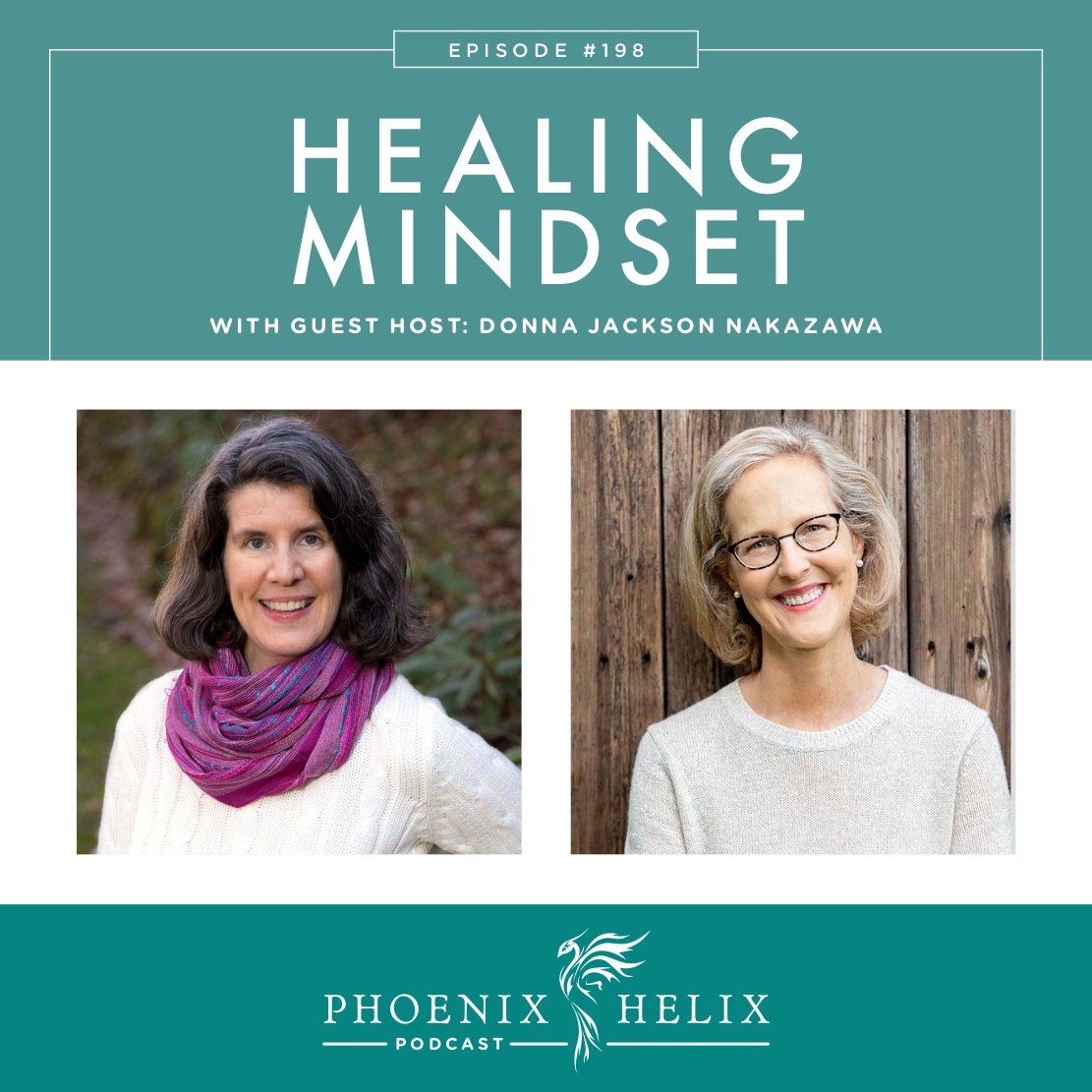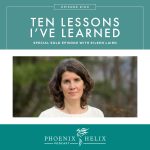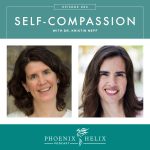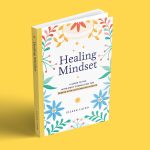
What Is a Healing Mindset?
Today we have a very special episode. I’m celebrating the publication of my new book: Healing Mindset. It’s a guide to the mind-body connection for people with autoimmune disease. The mind-body connection isn’t just an idea. There’s an entire field of science called psychoneuroimmunology that studies this connection. How we feel in our body affects how we feel in our minds, and our thoughts and feelings impact our physical health. Today, we’ll be talking about specific mind-body techniques, science-based benefits, and how to harness this connection for autoimmune health. My partner for this episode is Donna Jackson Nakazawa. Many of you know her as one of my most popular podcast guests. She’s an award-winning science journalist, author of 7 books, a fellow autoimmune warrior, and an expert on the mind-body connection. Today, we’re trading places. She will be the host and I will be the guest!
Listen to the Show
- Subscribe to my podcast through your favorite podcast app: iTunes, Stitcher, Google, TuneIn, Spotify, Amazon, etc.
- You can also listen to the episode right here through the player below, and if you subscribe to my newsletter you’ll get notified of future episodes.
Podcast: Play in new window | Download
Show Notes
- Intro (0:00)
- Meet My Guest Host: Donna Jackson Nakazawa
- We’re switching things around on this episode of the Phoenix Helix Podcast. Your host, Eileen Laird, has written a new book: Healing Mindset! So, today Eileen is the guest, and she invited her friend and fellow author, Donna Jackson Nakazawa to be the guest host!
- Donna is a science journalist, autoimmune warrior, and the author of multiple books, including Childhood Disrupted and The Last Best Cure, which we talked about on Episode 24 of this podcast, and The Angel and the Assassin, which we talked about in Episode 140.
- She’s also the creator of Your Healing Narrative: Write-to-Heal with Neural Re-Narrating.
- Thank You to Our Podcast Sponsor – Functional Nutrition Alliance (2:49)
- Full Body Systems is their internationally acclaimed, 10-month online functional nutrition immersion training program.
- It’s designed by world-renowned educator, Andrea Nakayama. Many of you know her as one of my most popular podcast guests. Her unique way of working with patients often leads to results where other practitioners hit dead ends. This program teaches you to do the same.
- If you’re already trained as a health coach, nutritionist, or medical practitioner and want to more effectively help your clients break through healing plateaus, this class is for you!
- And if you’re an aspiring practitioner just getting started, this might be the only training you need.
- You’ll gain detailed knowledge of all the systems in the body, how they interact, how problems develop, and how to personalize diet and lifestyle recommendations for each unique client.
- Enrollment is currently open. To learn more, visit FxNutrition.com/Eileen.
- Common Myths About the Mind-Body Connection (4:28)
- Myth #1: It’s All In Your Head. – Since it often takes many years to get an autoimmune diagnosis, many people have had doctors dismiss their physical symptoms when lab tests come back normal, and have been told they should see a psychiatrist. This is called medical gaslighting. Let us reassure you – your autoimmune symptoms aren’t all in your head.
- Myth #2: It Doesn’t Exist. – If you have been told it’s all in your head, you may resist the idea of the mind-body connection at all, believing your symptoms are purely physical and mind-body techniques can have no impact. But our mind and body are connected – the health of one does affect the other. Mind-body techniques can positively impact autoimmune health.
- Myth #3: It Cures All Things. – Some people exaggerate the scientific reality of the mind-body connection and put it in the realm of fiction by telling you that you can cure yourself with your mind. This isn’t how it works, and it puts an unfair burden on people with chronic illness. You are not a failure if you can’t cure the incurable. However, while the mind-body connection isn’t a cure, it can be a powerful complementary medicine, and isn’t that magical enough?
- Science-Backed Benefits of the Mind-Body Connection (9:28)
- Less stress reactivity.
- Reduced inflammation.
- Better sleep.
- Improved digestion.
- Less pain.
- More willpower for healthier choices
- Greater mental clarity
- Less fatigue.
- Improved relationships.
- Better health overall.
- In addition to these general benefits, there are also positive biochemical changes to the immune system pathways involved in autoimmune disease (like IL-6 and TNF-a). There are epigenetic changes as well, changing the expression of our genes in an anti-inflammatory direction.
- Healing Mindset includes over 140 scientific references, but it’s not a textbook. It’s a practical guide to mind-body techniques. It’s grounded in science, but written like a conversation between friends.
- Eileen’s 1st Experience with the Benefits of Mind-Body Techniques (13:17)
- Before rheumatoid arthritis, I believed in the potential power of the mind-body connection, but lacked the inspiration and discipline to make those techniques part of my life.
- It was my health crisis that inspired me to make a lot of positive changes, and meditation was one of them.
- I experienced rapid and severe onset of RA and suddenly found myself in a body filled with excruciating pain every day. It was disabling and frightening and I didn’t know how I could survive it. Every night, when a flare would descend, I would sit in my Lazy-Girl chair, trying not to move (because movement hurt), and would listen to guided meditations by Jack Kornfield: A Lamp in the Darkness. It soothed me in a way nothing else did, providing me with calm in the midst of chaos. It was medicine to me. Meditation became a daily practice, and I was very inspired to learn more about the power of the mind-body connection.
- Note from Donna: many of us weren’t raised in families that taught the value of self-care. And if we also experienced childhood trauma or adversity, that’s especially true. So, it often takes a health crisis to open us up to things like mind-body techniques.
- 96 Mind-Body Techniques (18:03)
- Healing Mindset includes 96 mind-body practices, to give people a wide array of options. And while you can read the book cover to cover, you can also jump to any chapter to learn more about a theme and start implementing helpful techniques right away.
- We’re all unique in the practices that we find most helpful. We may also need different practices on different days, depending on our stress levels, autoimmune symptoms, emotional state, and the time we have available. So, the book contains short practices as well as longer ones.
- Each chapter also contains beginner tips, troubleshooting, and further resources. My goal with this book is to take the intimidation out of the mind-body connection and empower every reader to experiment and find what works for them.
- Some of Donna’s favorite techniques in the book include group gratitude, mirror affirmations, writing a letter to your body, making memories by savoring positive experiences, and noticing light and shadow as a way to ground yourself in the present moment.
- What Surprised Eileen in Writing the Book (23:49)
- I originally thought the book was going to be for other people, because I was already practicing the mind-body connection in my own life. But of course, the book ended up being for me as well. I learned so much through my research and expanded my personal practice, deepening techniques I’d been doing for years, but also opening myself up to trying techniques I had disrespected in the past (like affirmations.)
- Before writing this book, I thought affirmations simply sugarcoated and glossed over difficult experiences in a way that wasn’t truly helpful. And when done badly, that’s true. But when done correctly, affirmations can be a beautiful practice. I was also introduced to the idea of Iffirmations. If you say an affirmation, and your inner critic objects, simply add the words, “What if” in front of it. Those two words can break through your mind’s resistance and open you up to possibilities. For example, if you try saying the affirmation, “I am worthy,” and your mind unhelpfully responds, “You’re not worthy.” Try Iffirmations instead:
- What if, I am worthy.
- What if, I treat myself with kindness.
- What if, my immune system is coming back into balance.
- Suddenly, it seems possible.
- Thank You To Our Podcast Sponsor – Luminance Skincare (29:45)
- This week, I’m highlighting their Premium Peptide Line. This podcast often focuses on the importance of nutrition, and collagen is a key nutrient that our bodies need. As we age, we make less collagen, and that leads to a loss of elasticity in our skin. This premium skincare line contains plant proteins and nutrients that encourage collagen production in the deepest layers of our skin. The premium facial serum absorbs quickly and completely into those deep layers and leaves your skin feeling very soft. The premium moisturizer is designed to nourish and moisturize the upper layers of your skin. The premium eye cream is designed to gently soften wrinkles. And the premium antioxidant mask eliminates skin damaging free radicals that collect in your skin through the day. This set can be purchased separately or alongside their bestselling cleanser and toner.
- Whereas conventional skincare products are full of chemicals that can hurt our bodies, Luminance is made from ingredients that nourish. It’s the cleanest skincare anywhere! Their products are natural, organic, wildcrafted, non-GMO, and gluten-free (and they’re even made in a dedicated gluten-free facility). They’re also handmade in small batches within the United States.
- They have a complete face and body care line, including cleansers, toners, moisturizers, masks, acne serum, sunscreen, haircare, and more.
- Place an order here, and use the code HELIX for 10% off your first order.
- Eileen’s Life Crises that Intersected with Writing This Book (31:43)
- I started writing Healing Mindset in 2019 shortly before the death of my father, and my mother died less than a year later.
- I was also the executor of the estate in the midst of a complicated family dynamic, and because of the pandemic, had to do those tasks from 1000 miles away.
- I ended up in a health crisis. I developed a pressure sore in my foot that got infected and required surgery, and I ended up in a wheelchair for 3 months.
- The symbolism of it being a pressure sore wasn’t lost on me. RA has changed the shape of my feet, which is the physical reason behind the pressure sore, but that has been true for almost a decade. It was only now, under extreme stress, that a pressure sore developed. Donna pointed out that my body might also have been saying “I can’t stand this”. It’s a powerful example of the mind-body connection at work.
- It may be surprising to hear that I continued to write this book during all of these events, but I think writing this book saved me. It was filled with techniques that empowered and comforted me. My self-compassion deepened. I learned to become comfortable asking for (and accepting help). I got counseling. I also developed a morning routine that included mind-body techniques I hadn’t practiced before. I would begin my mornings on the couch, listening to a song by India Arie – I Am Light. I followed that with a healing visualization, and finished with affirmations.
- I also had to confront one of my biggest fears: ending up in a wheelchair due to rheumatoid arthritis. While there was a deep grief in the experience, by the end, there was also a deep gratitude. Not only that I was able to heal and return to walking again, but I also became grateful for the wheelchair itself. It gave me more freedom and mobility and independence during that time. I would have been much more disabled without it.
- Grief can crack us open, but beautiful things can also come in when that happens.
- How Eileen Found the Time to Write This Book (38:21)
- Phoenix Helix is a full-time job, and Donna was curious how I found the time to write this book on top of my normal tasks.
- There are two chapters in Healing Mindset that talk about time management, one from the perspective of mindset (how we think think about time), and the other from the perspective of priorities (how we spend out time).
- The first step to writing this book was making it a “Big Yes” in my life. Whenever we say yes to one thing, we are also saying no to something else, because time is limited. So, it’s important to make sure we’re saying yes to what matters most. Picture a jar and a pile of big and little stones. If you fill the jar with little stones first, the big ones won’t fit. And that’s how many of us live our lives – the small things on the schedule eat up all our time, and there’s no time left for the big things we say we want. But if you put the big stones in the jar first, you can fit some small stones around them. What are your big stones? Your “Big Yeses”? What are the things that you value the most? What goals or dreams do you want to achieve? Clarifying these is the first step to achieving them.
- The next step is to get an accurate picture of how you are currently spending your time, so can find time for your Big Yeses. Time tracking is a simple technique where you keep track of how you spend your time over the course of a day. Start when you wake up in the morning, write down the time, and then continue to mark the time as you start and end various activities throughout the day, not stopping until you go to bed. Look back over it – you will likely be surprised. Most of us aren’t good at estimating this, which is why this is such a powerful tool. For me, it helped me find time to write my book. I cut back on social media, I cut back on some of the tasks I do for Phoenix Helix, and I also got better at focusing my time.
- The final piece is the commitment. Writing this book was a commitment I made to myself continually. It wasn’t a one-time decision. The world is full of distractions, and without this commitment, I never would have written the book. In addition to distractions, I also had to overcome internal resistance. This is really common when we pursue a dream or a big goal. Books are not small things. It took me three years to complete. There were many easier ways to spend my time, but I continued to honor the commitment to write this book because it was valuable to me. And I’m so glad I did! Donna experiences this resistance too when she’s pursuing a goal like writing or even just taking time for herself. She thinks it’s a resistance to self-care – that if it’s something we enjoy, or something just for us, there’s some part of us that believes it’s not worthy of our time. And we need to overcome that.
- A Mind-Body Technique For Overcoming Self-Limiting Beliefs (47:48)
- This is another exercise from the book that helps challenge the negative voice in our head and open us up to possibilities. Limiting beliefs are very common with chronic illness. Sometimes they’re based on experience – health struggles that have changed what we can and can’t do. Other times they’re beliefs we’ve absorbed from others – a doctor’s prognosis, or a family member’s discouragement, or fearful stories on the internet. The problem with limiting beliefs is that they’re not always grounded in reality. Sometimes, we can do more than we think we can, and negative beliefs make our lives smaller than they need to be.
- Here’s the exercise: Without editing yourself or judging yourself, very quickly make a list of things that follow the phrase, “I can’t….” When the list is complete, go back through those and challenge each belief. Is there proof that’s true? Is there a small way you can do something in that category? If your mind is still telling you that everything is impossible, ask an encouraging friend to look at the list as well and see what they think. Finish by writing a list of things that follow the phrase, “I can….” And it’s okay to include things on the list that begin with, “I can try….”
- Eileen: When I developed RA, yoga postures became painful, so I stopped practicing because I believed that yoga was something I could no longer do. I didn’t realize Accessible Yoga existed, and only discovered that recently. If I had been open to that possibility 10 years ago at my diagnosis, I wouldn’t have gone so many years missing the yoga postures that I loved. I was right that I couldn’t practice yoga the way I had in the past. I was wrong in thinking that all yoga was beyond me.
- Donna also shared an example of overcoming a limiting belief: One of Donna’s autoimmune diagnoses is Guillain-Barre Syndrome, and as a result, she doesn’t have the same muscle strength and balance she had before. This means she can’t swim alone in the Atlantic ocean among the waves the way she did as a child. But she discovered that if she went into the ocean with her husband on one side and her son on the other, she could jump over the waves again and enjoy one of her favorite experiences.
- What Eileen Would Say to Her Younger Self (53:46)
- If I could go back and talk to myself when I was first diagnosed with RA and living with so much pain, first and foremost, I would reassure myself that it was going to be okay, because that’s what I needed to hear and believe and I couldn’t imagine how it would be okay.
- However, back then, I was also looking for a cure, and I don’t think I was ready to hear there wasn’t one. I think that’s a phase many of us go through. But I would try to reassure my younger self that even though there is no cure, there is hope, and that we have a deep capacity within us for self-care and resilience.
- My goal now (10 years later) is to thrive with autoimmune disease, and there aren’t specific rules about what that looks like. I have many tools – diet, lifestyle, mindset, integrative medicine – and it’s empowering to have those available to me. No matter what else is beyond my control, self-care is always an option, and it makes a profound difference. It may not be a cure, but it’s the foundation for resilience and living well with autoimmune disease.
- I would also tell my younger self that our body doesn’t hate us. We often feel so betrayed by our bodies, and the language around autoimmune disease is so war-like (your body is attacking you) that it doesn’t inspire self-compassion. But our body is actually trying to protect us. Our body is on our side, and it wants us to be well. Autoimmunity has complicated things, making our immune system overprotective – but the damage isn’t intentional. It’s also important to remember that we aren’t separate from our bodies. So if we hate our bodies, or feel that our bodies hate us, that is self-hatred. So, I would encourage my younger self to try to replace that self-hatred with self-compassion instead.
- One of the exercises in the book is to make a list of everything our body does right – everything we take for granted. All the places in our body where an autoimmune attack is not happening. All the organs that function perfectly. All of the cellular processes happening every second that we don’t think about. The list of things your body does right is very long, but it’s okay to start with a small list of just 10 things. Write them down, and see if you can feel grateful for each of them.
- Where to Buy the Book: Healing Mindset (1:01:02)
- Outro (1:02:03)
- In addition to Healing Mindset, Eileen Laird (aka Phoenix Helix) is the author of multiple books, all written to help people thrive with autoimmune disease. Learn more on the Books Page.
- You can connect with Donna Jackson Nakazawa through her website. She also has a new book coming out later this year which is available for preorder: Girls on the Brink: Helping Our Daughters Thrive in an Era of Increased Anxiety, Depression, and Social Media. And if you’d like to hear my interviews with Donna where she was the guest instead of the host, listen to episodes 24 and 140.
- If you like this podcast, follow or subscribe through your favorite podcast app. You can also subscribe to Eileen’s biweekly newsletter.
- Check out the entire archive of podcast episodes.
You May Also Be Interested In
Spreading the Word
If you like the podcast, please leave a positive review in iTunes. It would mean the world to me, and also helps others find the podcast. Here are some quick instructions using your iPhone:
- If you are already subscribed to my podcast: (1) Click the purple podcast icon. (2) At the bottom of the screen, click Library. (3) At the top of the screen, click Shows. (4) Click the Phoenix Helix podcast image. (5) Scroll down the page, and you’ll see Ratings and Reviews. Scroll down a little bit more and click on Write a Review. This will bring up the review screen. Tap 5 stars (if you love the podcast), and then click in the title box, and it will bring up the keyboard. Enter a title and short review. (6) Click Send in the upper right corner. (7) Thank you! Positive reviews give the podcast a higher search ranking in iTunes, helping people find it and letting them know it’s a quality podcast and worth their time to listen.
- If you haven’t subscribed to my podcast: (1) Click the purple podcast icon. (2) In the lower right corner, click the magnifying class. (3) Type Phoenix Helix in the search box. (4) Click the podcast cover in the Show list. (5) If you’d like to subscribe, click the + sign at the top of the screen. (6) To write a review, scroll down the page, and you’ll see Ratings and Reviews. Scroll down a little bit more and click on Write a Review. This will bring up the review screen. Tap 5 stars (if you love the podcast), and then click in the title box, and it will bring up the keyboard. Enter a title and short review. (7) Click Send in the upper right corner. (8) Thank you! Positive reviews give the podcast a higher search ranking in iTunes, helping people find it and letting them know it’s a quality podcast and worth their time to listen.







